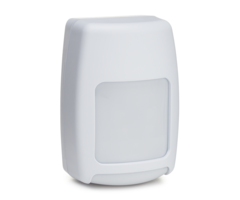Long range PIR motion sensors are best used for detecting motion across extended areas. They are often utilized in commercial applications where larger areas of detection are needed. These sensors work by looking out for changes in infrared energy. Buy a long range PIR motion sensor from Alarm Grid.
Long range PIR motion detecting sensors are used in large areas that need to be monitored by a motion. These areas can include warehouses, large areas of property and deep hallways. Long range PIR motion detectors function in the same way as regular PIR motion sensors. The only difference is that they can detect motion across a large area. Whenever motion is detected, the sensor will send a signal to the system to perform the programmed response. Some common response types for motion sensors include activating a siren, requesting police dispatch and triggering a Z-Wave scene.
PIR refers to passive infrared. This means that the motions use passive infrared technology to detect motion. When a PIR motion detector is first activated, it will take a current reading of the infrared energy in the area. If a sudden, abrupt change in infrared energy is detected, the sensor will send a signal to the system to fault the corresponding zone. A sudden change in infrared energy is typically caused by a person walking into a room. However, the change in infrared energy can also be caused by moving objects or animals. It is very important to adjust the sensitivity setting for a long range PIR motion so that it can properly detect motion and not trigger false alarms. Most long range PIR motion detectors do not offer pet-immunity. For this reason, long range motions are typically not best-suited for homes with pets, as they may cause false alarms on the security system. Instead, a residential motion sensor should be used.
Long range motion sensors can either be hardwired or wireless. A hardwired long range PIR motion will need to run a wire directly to the security panel or to a wired to wireless converter. This can make for a more challenging installation. However, the benefit to a hardwired sensor is that it will never require a battery replacement. On the other hand, a wireless long range PIR motion detector will send signals to the security system wirelessly using RF communication. This will eliminate the need for running a wire, but the sensor will require battery replacements every few years. A wireless receiver is needed to use a wireless motion with a hardwired panel.
When installing a PIR motion sensor, mounting location is extremely important. The sensor should be placed at the optimal height for detecting motion. This is about six to eight feet high. It is also recommended that the motion sensor be placed in the corner of the room so that it can detect motion throughout the area. The user should perform a walk test after powering on a motion for the first time. This will let them know if the motion sensor was installed in a good area. Many long range motion sensors can have their lenses replaced to adjust their overall scope of coverage. For example, a curtain lens will allow the sensor to detect motion across an area that is very long and narrow, such as a hallway.





